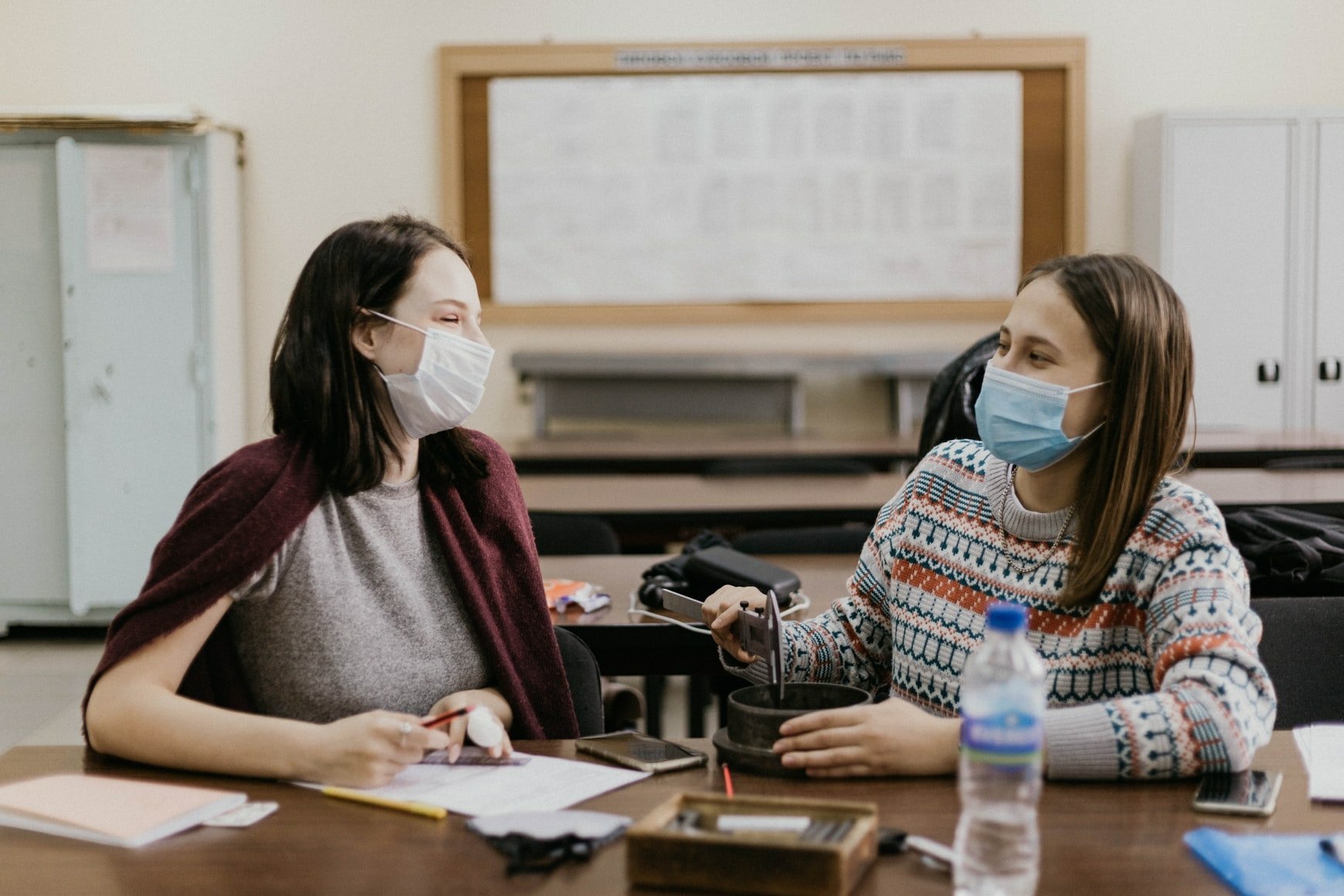Ava Wahl
On August 23, 2021, the most recent state-wide mask mandate came into effect, requiring facial coverings to be worn by students and teachers in all public educational settings. The masks we put on everyday on our campus are a visible reminder of how the pandemic is still affecting our lives. There may be drawbacks, but, ultimately, we must remember this is a necessary method to reduce the spread of COVID-19. A lower infection rate is the key to ending the mandate and returning to life without masks. For the time being, masks are a fundamental part of school life.
When asked about wearing masks at school, freshman Sasha Olson responded, “I don’t enjoy wearing a mask at school because it makes it more difficult to hear other people speak. But I do know that we need to wear them and I am grateful that we are all required to wear them.”
Needless to say, masks have made this year strange. As a result, the way in which WHS students and faculty connect has changed. Cara Gallagher, a freshman, explains she “doesn’t really know what anyone looks like, and sometimes it’s hard to hear people talking.”
Facial coverings can make students feel overwhelmed or anxious, affecting one’s ability to form relationships. It can be hard to befriend someone when all you can see is their eyes.
Mr. Dahl, who teaches Social Studies here at WHS, says, “I wouldn't say there is a big difference. The only big difference is that it is a little harder to convey an air of levity without being able to smile.”
Concerning the guidelines set out for us regarding masks, it is up to the school to decide what rules best suit our situation. In response to a question about the school’s precautions against COVID-19, Mr. Dahl replied, “Both the situation and the science are evolving in real time. I believe the school must make some really hard decisions to provide students with a safe environment but also with the best opportunity for them to learn. That said, the best precautions are those that emanate from a consistent framework.”
It is the school’s job to establish rules and ensure the safety of students and educators. However, the success of our efforts also weighs on the school’s ability to set logical guidelines. Junior Jake Happ comments, “I think the school is not taking the right precautions; not even close. To put it simply, they need to be more consistent with their rules. We can be packed in a lunchroom eating and talking without masks on, and I'm ok with that. But on the other hand, they can't have people in a gym for an assembly, which is arguably safer.”
At times, the school’s mitigations have been inconsistent and loosely enforced. Even so, part of the burden rests on the students’ willingness to follow the guidelines and their awareness of what is at stake.
A WHS student admits, “I legitimately get uncomfortable in some of my classes because a tablemate decided that nostrils don't count as breathing holes and doesn't cover them. There's also a tendency for those types of people to opt-out [of batch testing], at least in my class, which is slightly distressing.”
Rules are not to be taken lightly, yet quite a lot of students fail to wear their facial coverings correctly, ignoring the consequences.
Masks are more important than they seem. They help us protect those who are not vaccinated and ensure we continue in-person learning. Yes, masks can be a pain. It may seem like a bother to put one on every day as you head for school. Masks make it harder to hear and get to know others, stilting conversation. However, we know that masking is an act of awareness towards the strength of our community, and they are vital if we ever hope to return to normalcy.

